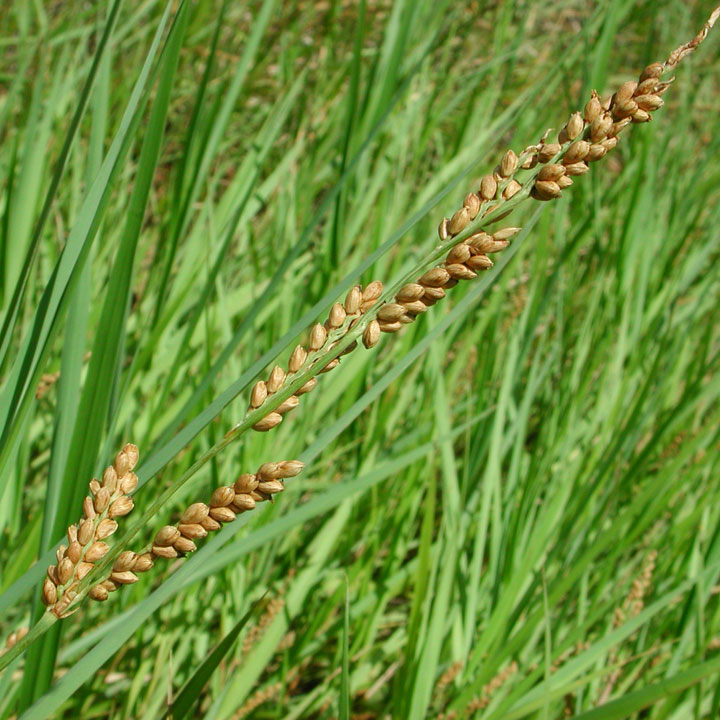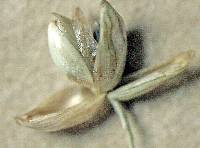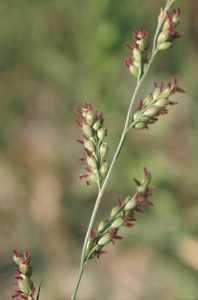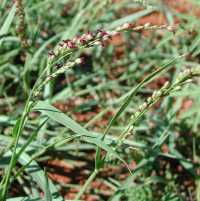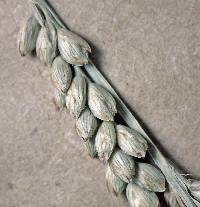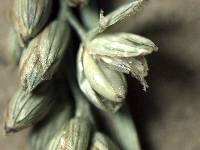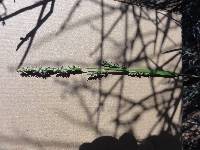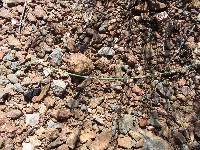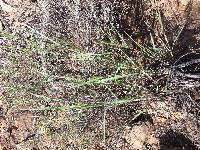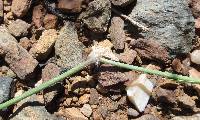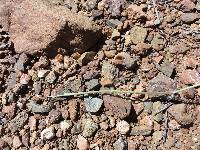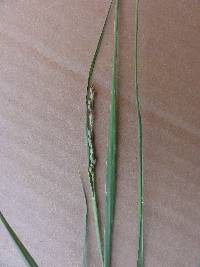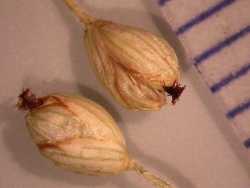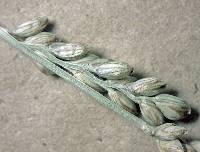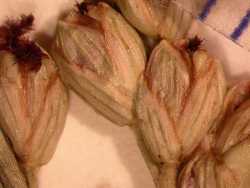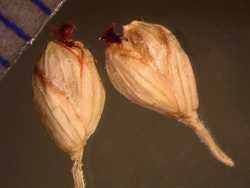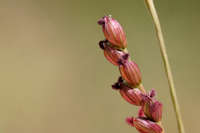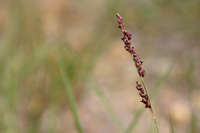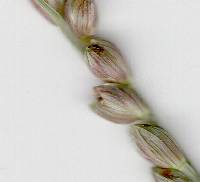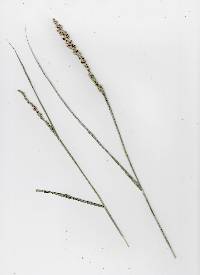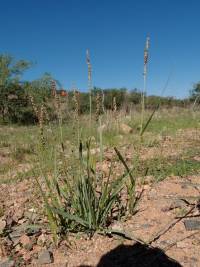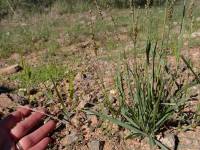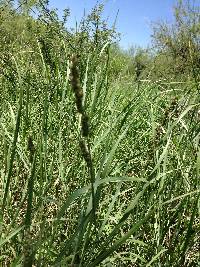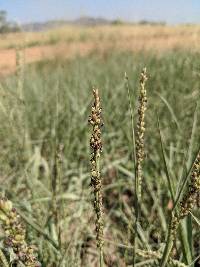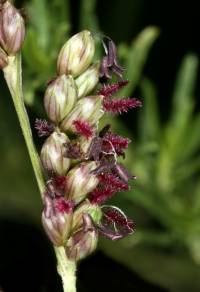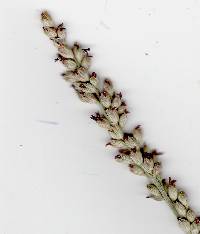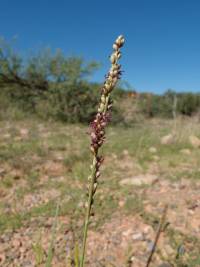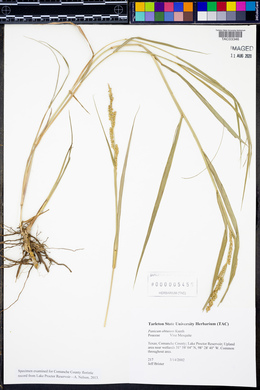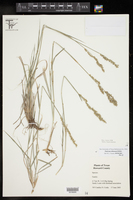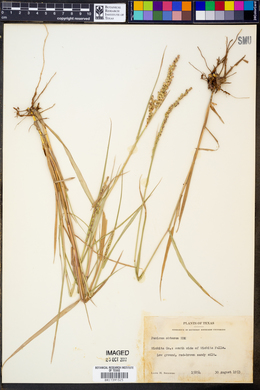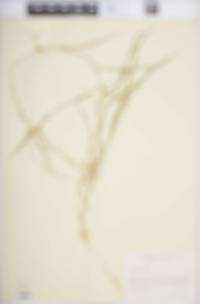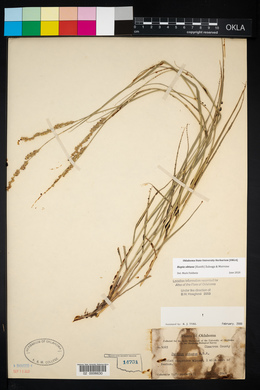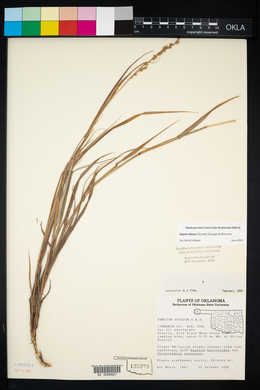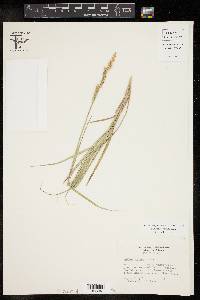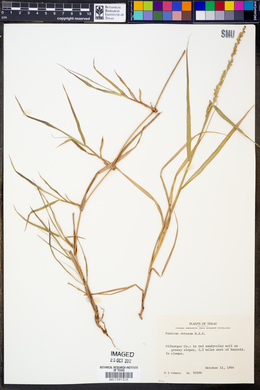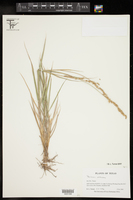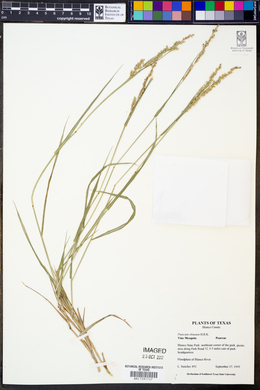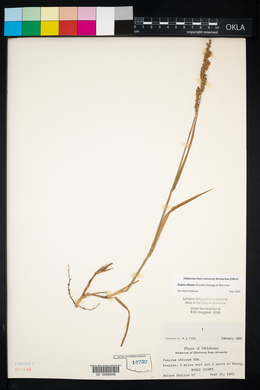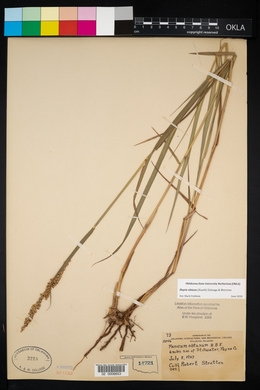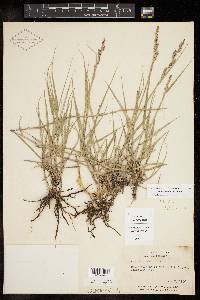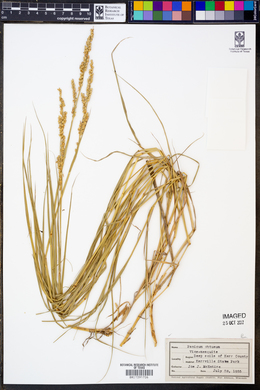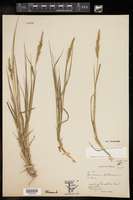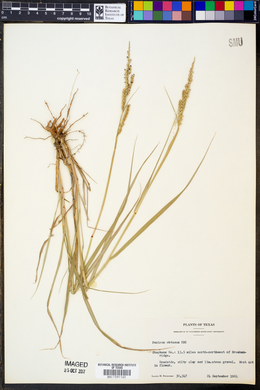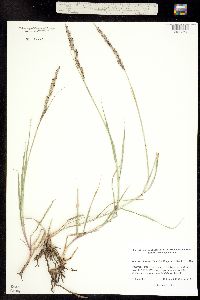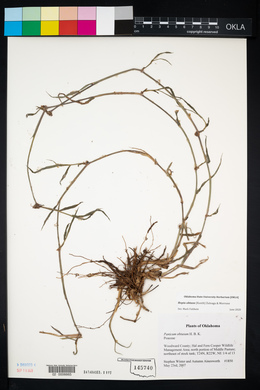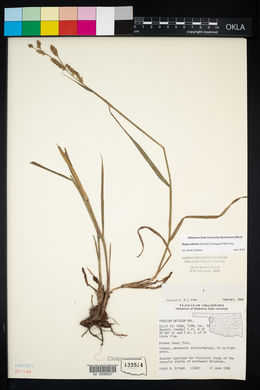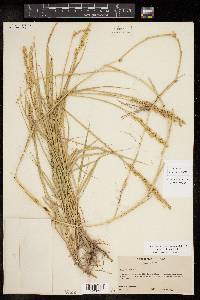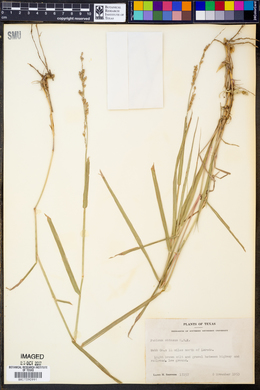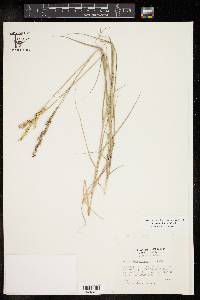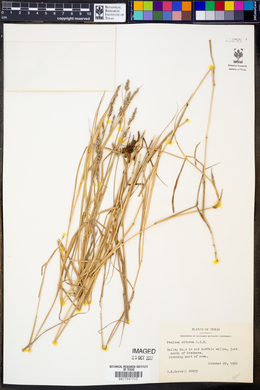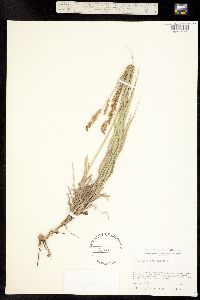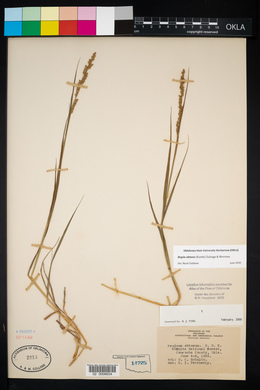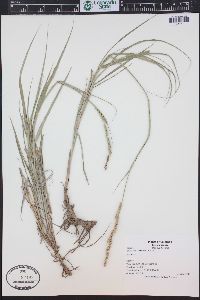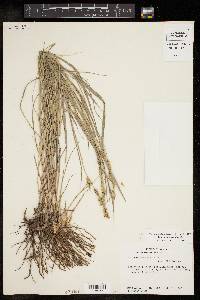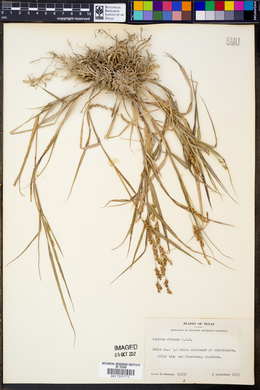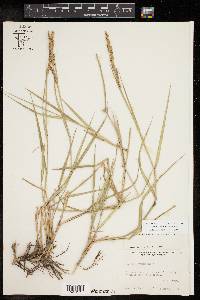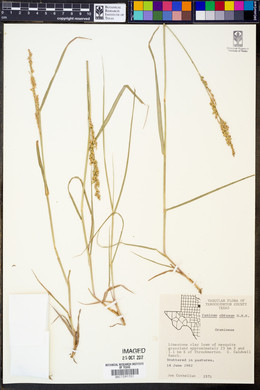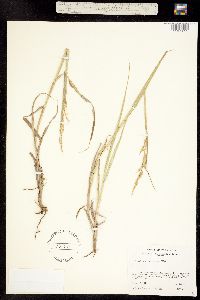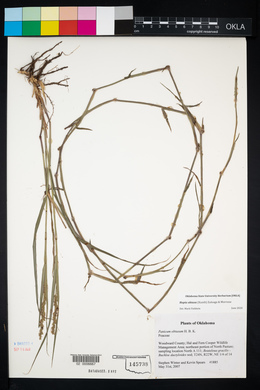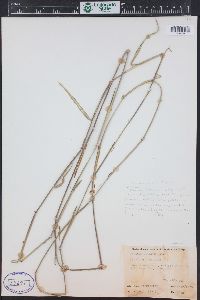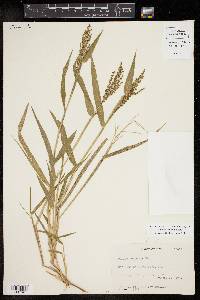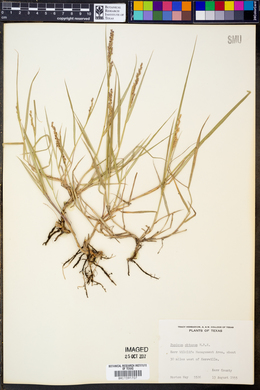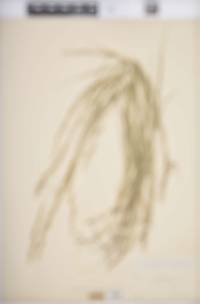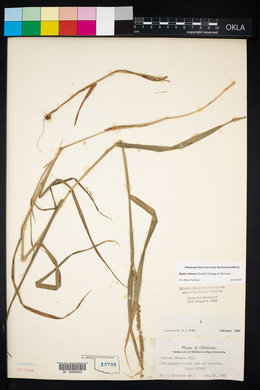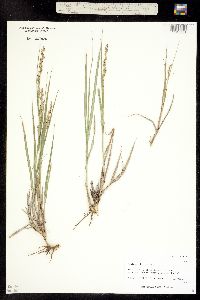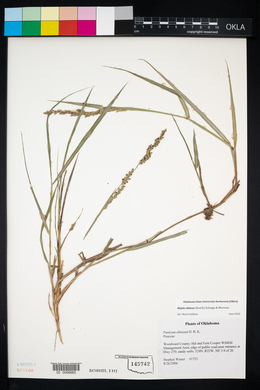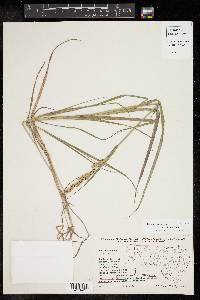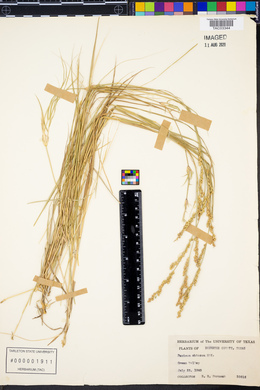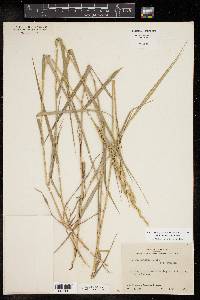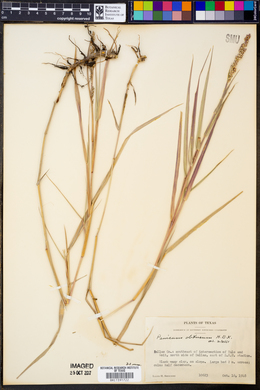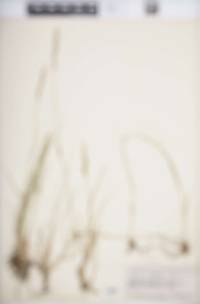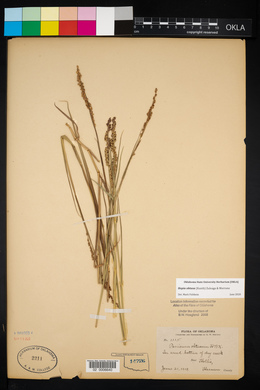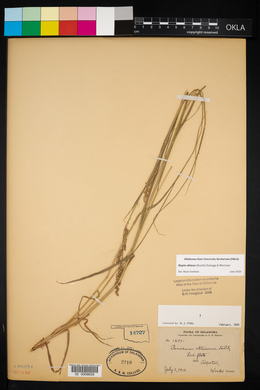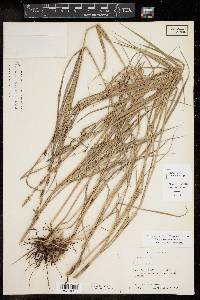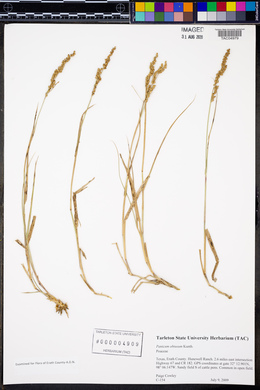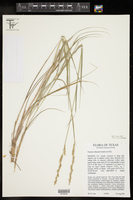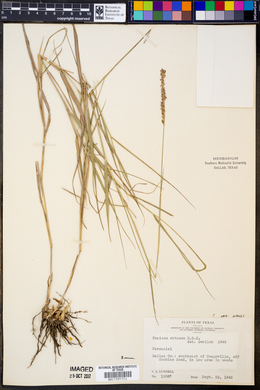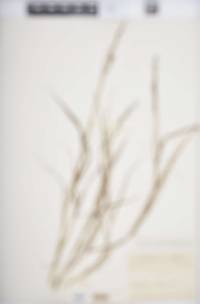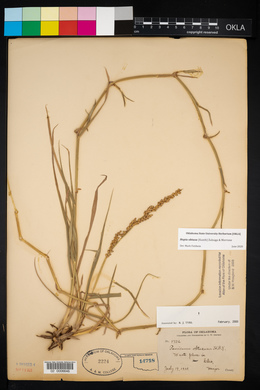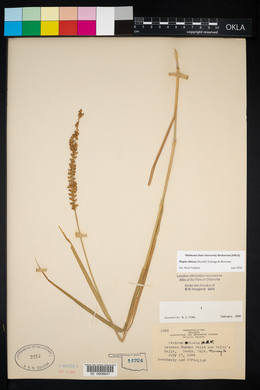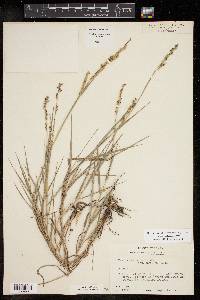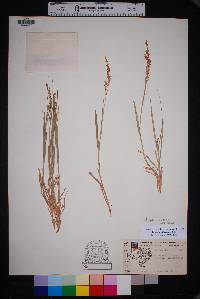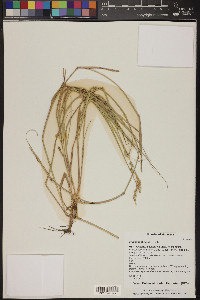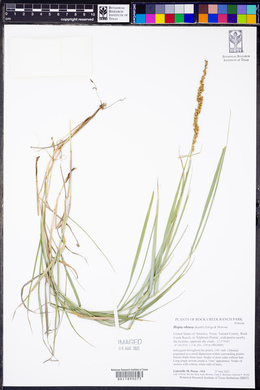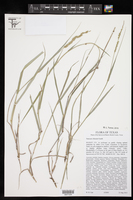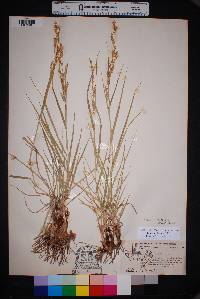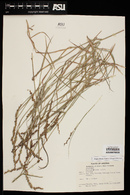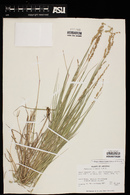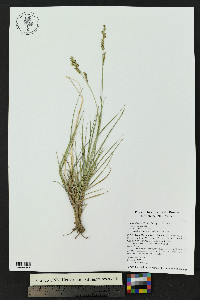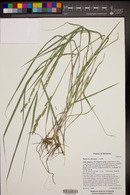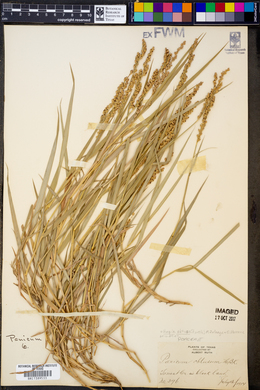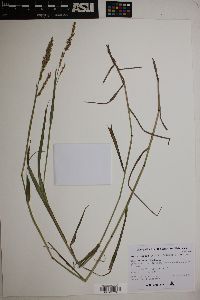Hopia obtusa
|
|
|
|
Family: Poaceae
vine mesquite, more...Vine-Mesquite, vine mesquite grass, vine mesquite (es: zacate guía, zacate gramilla, triguillo)
[Brachiaria obtusa (Kunth) Nash, moreOplismenus obtusum (Kunth) Smyth, Panicum obtusum Kunth, Panicum repente Buckley] |
Dr. David Bogler, USDA NRCS PLANTS Database Perennials, Terrestrial, not aquatic, Rhizomes present, Rhizome elongate, creeping, stems distant, Stolons or runners present, Stems nodes swollen or brittle, Stems erect or ascending, Stems caespitose, tufted, or clustered, Stems terete, round in cross section, or polygonal, Stems compressed, flattened, or sulcate, Stems branching above base or distally at nodes, Stem internodes solid or spongy, Stem internodes hollow, Stems with inflorescence less than 1 m tall, Stems, culms, or scapes exceeding basal leaves, Leaves mostly cauline, Leaves conspicuously 2-ranked, distichous, Leaves sheathing at base, Leaf sheath mostly open, or loose, Leaf sheath smooth, glabrous, Leaf sheath hairy, hispid or prickly, Leaf sheath hairy at summit, throat, or collar, Leaf sheath and blade differentiated, Leaf blades linear, Leaf blades 2-10 mm wide, Leaf blades mostly flat, Leaf blades mostly glabrous, Leaf blades scabrous, roughened , or wrinkled, Leaf blades glaucous, blue-green, or grey, or with white glands, Ligule present, Ligule an unfringed eciliate membrane, Inflorescence terminal, Inflorescence solitary, with 1 spike, fascicle, glomerule, head, or cluster per stem or culm, Inflorescence with 2-10 branches, Inflorescence branches 1-sided, Flowers bisexual, Spikelets pedicellate, Spikelets sessile or subsessile, Spikelets dorsally compressed or terete, Spikelet less than 3 mm wide, Spikelets with 1 fertile floret, Spikelets with 2 florets, Spikelet with 1 fertile floret and 1-2 sterile florets, Spikelets solitary at rachis nodes, Spikelets all alike and fertille, Spikelets bisexual, Spikelets disarticulating below the glumes, Rachilla or pedicel glabrous, Glumes present, empty bracts, Glumes 2 clearly present, Glumes equal or subequal, Glumes equal to or longer than adjacent lemma, Glume equal to or longer than spikelet, Glumes 4-7 nerved, Lemma similar in texture to glumes, Lemma 5-7 nerved, Lemm a glabrous, Lemma apex truncate, rounded, or obtuse, Lemma awnless, Lemma margins inrolled, tightly covering palea and caryopsis, Lemma straight, Palea present, well developed, Palea about equal to lemma, Stamens 3, Styles 2-fid, deeply 2-branched, Stigmas 2, Fruit - caryopsis, Caryopsis ellipsoid, longitudinally grooved, hilum long-linear.
Zuloaga et al. 2007, FNA 2003, Gould 1980 Common Name: vine mesquite Duration: Perennial Nativity: Native Lifeform: Graminoid General: Sod-forming perennial grass, 20-80 cm tall, from long slender stolons or shallow rhizomes; stems wiry, glabrous, with swollen and densely hairy nodes; rhizomes to 1 m or more. Vegetative: Sheath open, glabrous, occasionally villous at base; blades light bluish green, flat, 2-7 mm wide, 5-20 cm long, the midvein prominent and white; ligule membranous, 1-2 mm long, obtuse, entire or sometimes lacerate. Inflorescence: Contracted raceme 1.5 cm or less broad, 3-14 cm long, with short, mostly simple and appressed branches; spikelets oblong or obovate, mostly 4 mm long, glabrous, subsessile on one side of branches, 2-flowered, the first floret reduced to a sterile lemma and the second floret fertile; first glume equaling or slightly shorter than second glume; fertile lemma indurate, 3 mm long, smooth. Ecology: Found in seasonally wet sand or gravel, especially on stream banks, ditches, roadsides, wet pastures, and rangeland, from 1,000-6,000 ft (305-1829 m); flowers May-October. Distribution: AZ and s UT, east to IL; south to c MEX. Notes: Until recently this plant was included in the genus Panicum. The genus Panicum is defined as having unawned spikelets with 2 florets, the first floret sterile or staminate, and the second floret bisexual with a rigid lemma that clasps the palea. This species has those characters, as it was long classified as Panicum obtosum. However, it was recently placed in its own genus, Hopia, based mostly on molecular evidence. H. obtusa is distinguished by being an erect to ascending perennial grass with long stolons or shallow rhizomes and often blue-green leaves. The inflorescences are branched, but narrow and contracted, bearing large, oblong, hard, one-seeded spikelets wrapped in bracts (lemmas and glumes) with vertical green veins, the purple stigmas usually peeking out before seeds ripen. Cures light reddish then grayish tan. Ethnobotany: Plant was used as fodder, roots were used as shampoo, and the seeds were eaten. Etymology: Hopia is an honorific for the Hopi people, while obtusa means blunted, referring to the shape of the spikelets. Synonyms: Panicum obtusum Editor: SBuckley 2010, FSCoburn 2014, AHazelton 2015 Slender, erect, 3-7 dm; basal stolons vine-like, to 2 m; lf-blades 1-2 dm נ3-6 mm; panicle slender, 5-15 cm, bearing several erect secund racemes 1-3 cm; spikelets ellipsoid to obovoid, 2.5-4 mm, brownish, obtuse; first glume three-fourths to nearly as long as the spikelet; second glume and sterile lemma subequal, obtuse or rounded, strongly veined; 2n=20, 36, 40. Moist soil; Utah to Kans., nw. Mo. (where probably only intr.) and Ark., s. to Mex. Gleason, Henry A. & Cronquist, Arthur J. 1991. Manual of vascular plants of northeastern United States and adjacent Canada. lxxv + 910 pp. ©The New York Botanical Garden. All rights reserved. Used by permission. |
|
|
|

